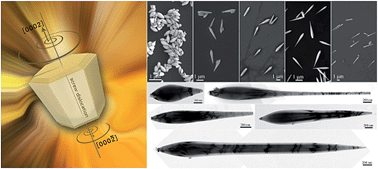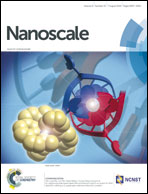Simultaneous axial screw dislocation-mediated growth and radial layer-by-layer deposition for controlled synthesis of asymmetric axial ZnO nanospindles†
Abstract
Single-component nanostructures with axial asymmetry were successfully synthesized in organic solvents via a new type of growth model. Asymmetric axial ZnO nanospindles with a hexagonal cross-section were produced by a growth model consisting of simultaneous axial screw dislocation-mediated growth and radial layer-by-layer deposition. The growth process of ZnO nanospindles is explained by comprehensively characterizing and monitoring the products at different reaction time intervals. Hexagonal discs containing dislocations were first generated at a reaction time of 2.5 min. When the reaction time continued to increase, the nanodiscs grew along the 〈0002〉 direction. Half-nanospindles were formed at mid-reaction stage when the growth rate of [0001] was greater than [000-1]. Finally, the asymmetric nanospindles were obtained at 40 min. Further, the length of the asymmetric axial ZnO spindles can be precisely tuned by the adjustment of reaction temperature. Thus, the growth model presented here can synthesize a new category of one-dimensional asymmetric nanostructures.


 Please wait while we load your content...
Please wait while we load your content...